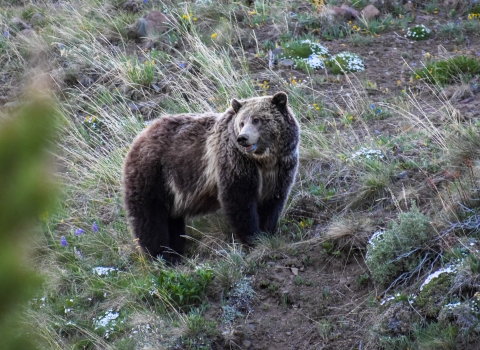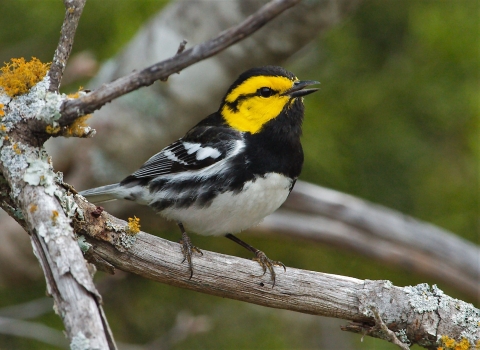LACEY, Wash. – As the Endangered Species Act turns fifty years old, it has brought about a conservation success story in the Pacific Northwest. Prairies in Washington and Oregon are once again colored with the bright flowers of golden paintbrush. Today, the U.S. Fish and Wildlife Service (Service) finalized a rule to delist the previously rare plant from the Endangered Species Act (ESA) due to recovery.
When listed as threatened in 1997, there were only 10 populations of golden paintbrush in the Pacific Northwest, consisting of fewer than 20,000 plants. Thanks to the efforts of diverse conservation partners, the species has now rebounded to over 325,000 plants at 48 locations from the Puget Trough of southwestern British Columbia and western Washington, into Oregon’s Willamette Valley.
“It takes a village to bring a species back from the brink, and the recovery of this plant would not have been possible without the amazing dedication of so many partners out on the prairie,” said Hugh Morrison, the Service’s Pacific Regional Director. “It feels fitting that we can celebrate the recovery of golden paintbrush during the golden anniversary of the Endangered Species Act.”
Golden paintbrush was listed as threatened under the ESA due to habitat loss, fire suppression and prairie conversion for agricultural uses and urban development. However, there has been a reduction in these threats, as well as increased resiliency in multiple populations throughout its range. Reintroductions and habitat restoration have helped this golden beauty bounce back, and ongoing prairie management by committed partners will maintain its recovery.
This is the latest ESA success story in Washington and Oregon. Recent species delisted due to recovery in the Pacific Northwest include Foskett speckled dace (2019), Borax Lake chub (2020), Bradshaw’s lomatium (2021), and water howellia (2021). Nelson’s checker-mallow, another prairie plant of the Pacific Northwest, was proposed for delisting in May 2022.
Since it was signed into law in 1973, more than 99% of all species listed under the law are still with us today. To date, more than 50 species have been delisted from the ESA due to recovery and more than 60 species that have been downlisted from endangered to threatened. The ESA encourages innovative partnerships that conserve wildlife and their habitats across the country.
During a five-year monitoring period following the plant’s delisting, Service biologists will keep a close eye on plant populations to make sure that the species remains secure from the risk of extinction. “Our monitoring of this species is designed to help us detect if additional efforts or management actions are needed,” said Service biologist Erin Gray.
Partners helping conserve and recover the golden paintbrush include: private landowners, Washington Department of Natural Resources Natural Heritage Program, Washington Department of Fish and Wildlife, Washington State Parks, Oregon Department of Fish and Wildlife, Oregon Department of Agriculture, Institute for Applied Ecology, Pacific Rim Institute, Center for Natural Lands Management, San Juan County Land Bank, Thurston County, Benton County, Greenbelt Land Trust, Portland Metro, City of Eugene, Heritage Seedlings, Whidbey/Camano Land Trust, Wolf Haven International, The Nature Conservancy, Whidbey Island Naval Air Station, Army Corps of Engineers, National Park Service, and Parks Canada.
Learn more about golden paintbrush
The U.S. Fish and Wildlife Service works with others to conserve, protect, and enhance fish, wildlife, plants and their habitats for the continuing benefit of the American people. For more information about our work and the people who make it happen, visit or connect with us via Facebook, Twitter, YouTube and Flickr.




